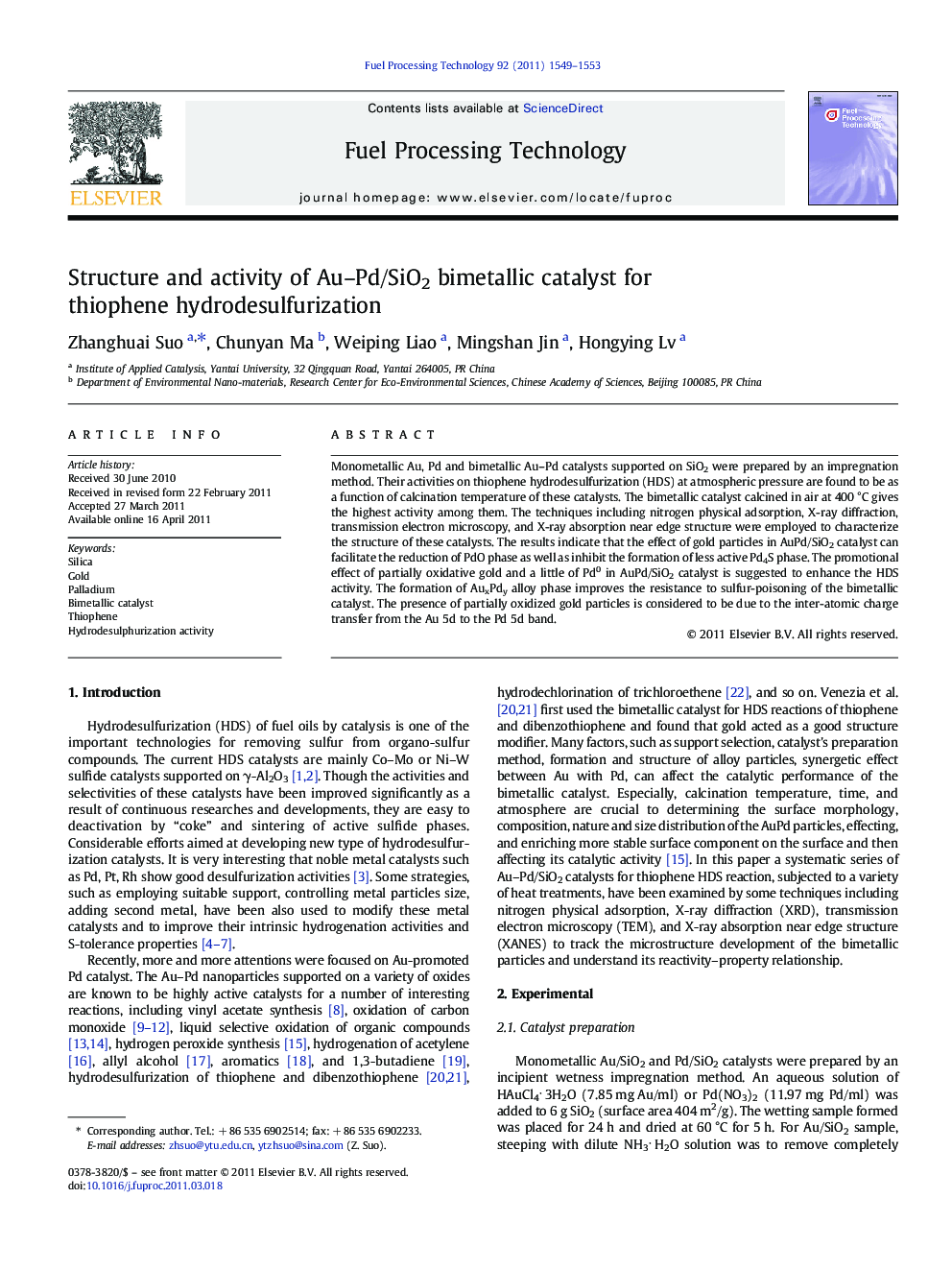| Article ID | Journal | Published Year | Pages | File Type |
|---|---|---|---|---|
| 210794 | Fuel Processing Technology | 2011 | 5 Pages |
Monometallic Au, Pd and bimetallic Au–Pd catalysts supported on SiO2 were prepared by an impregnation method. Their activities on thiophene hydrodesulfurization (HDS) at atmospheric pressure are found to be as a function of calcination temperature of these catalysts. The bimetallic catalyst calcined in air at 400 °C gives the highest activity among them. The techniques including nitrogen physical adsorption, X-ray diffraction, transmission electron microscopy, and X-ray absorption near edge structure were employed to characterize the structure of these catalysts. The results indicate that the effect of gold particles in AuPd/SiO2 catalyst can facilitate the reduction of PdO phase as well as inhibit the formation of less active Pd4S phase. The promotional effect of partially oxidative gold and a little of Pd0 in AuPd/SiO2 catalyst is suggested to enhance the HDS activity. The formation of AuxPdy alloy phase improves the resistance to sulfur-poisoning of the bimetallic catalyst. The presence of partially oxidized gold particles is considered to be due to the inter-atomic charge transfer from the Au 5d to the Pd 5d band.
Research Highlights► The HDS activity is a function of calcination temperature of Au–Pd/SiO2 catalyst. ► Gold particles can facilitate the reduction of PdO phase and inhibit the formation of less active Pd4S phase. ► The promotional effect of partially oxidative gold and a little of Pd0 enhances the HDS activity. ► The partially oxidized gold particles is caused by the inter-atomic charge transfer from the Au 5d to the Pd 5d band.
